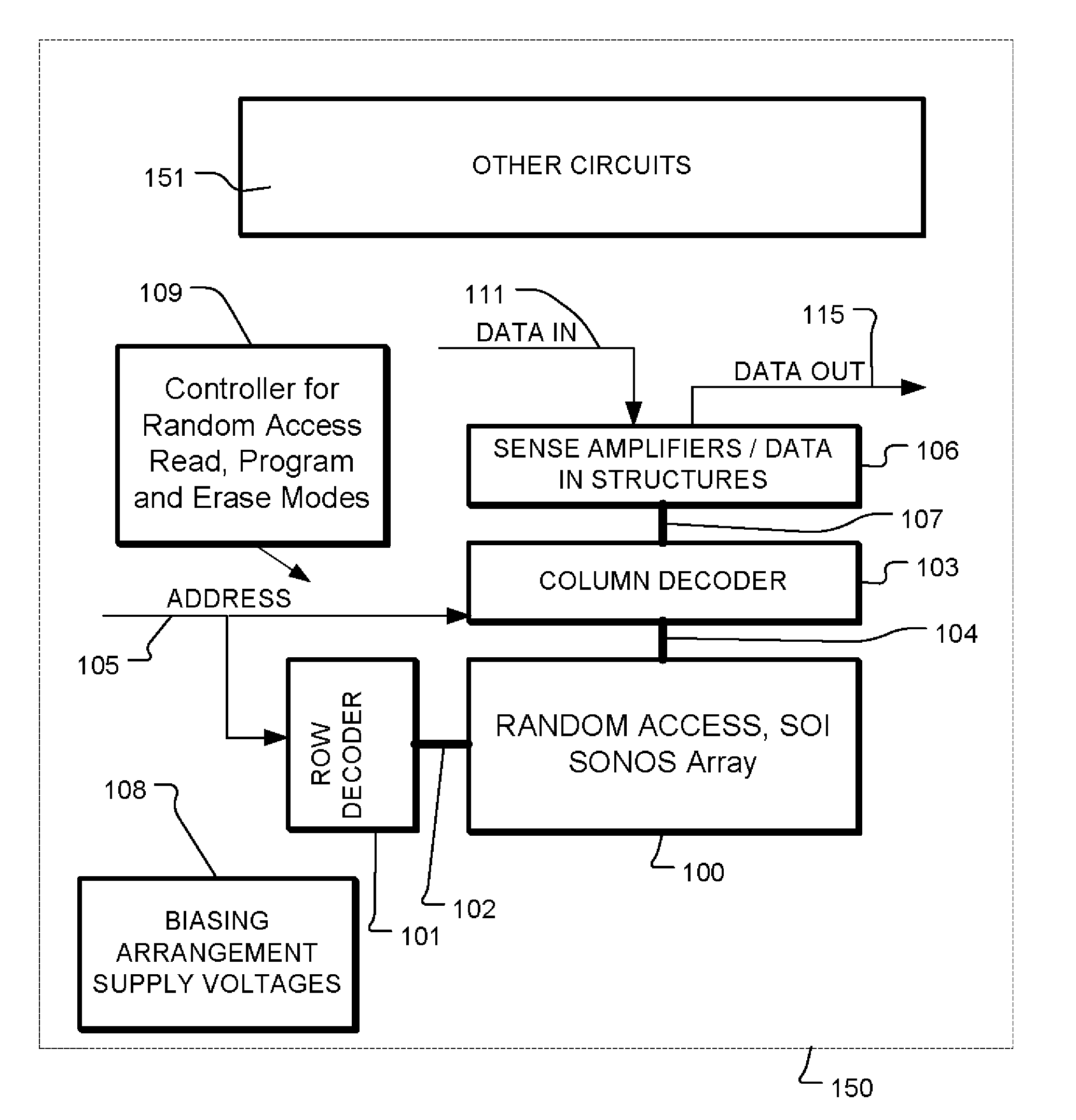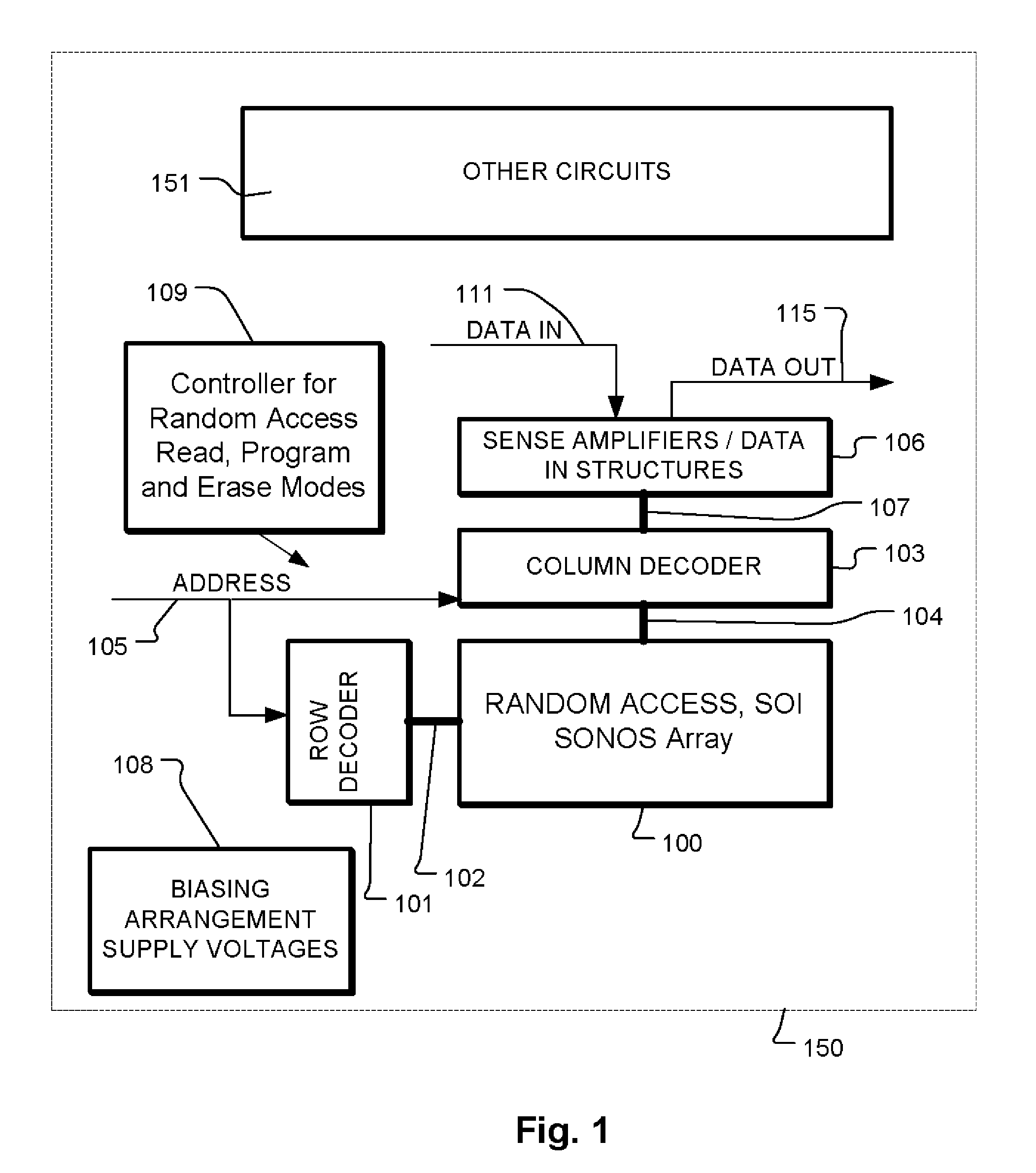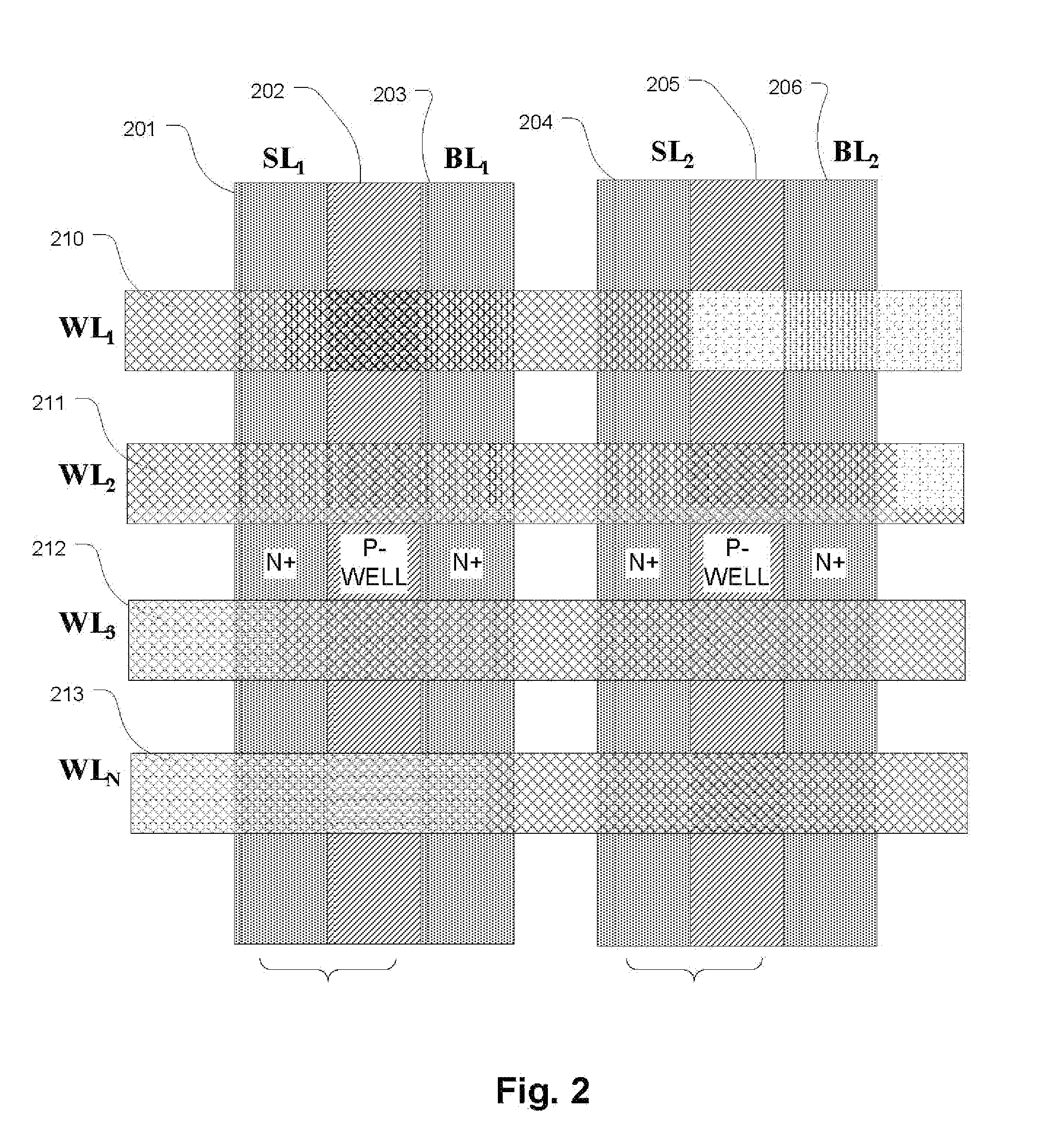One-transistor cell semiconductor on insulator random access memory
a semiconductor and random access memory technology, applied in the field of dielectric charge trapping memory technology, can solve the problems of limiting the total programming throughput of nor flash, affecting the performance of the memory, and consuming relatively large amounts of power,
- Summary
- Abstract
- Description
- Claims
- Application Information
AI Technical Summary
Benefits of technology
Problems solved by technology
Method used
Image
Examples
Embodiment Construction
[0048]A detailed description of embodiments of the present invention is provided with reference to the FIGS. 1-23.
[0049]FIG. 1 is a simplified block diagram of an integrated circuit 150 including a substrate which may be a single chip or multiple chips adapted for packaging together in a single integrated circuit package, and a memory array 100 in a first region of substrate which comprises an array of one-transistor, dielectric charge trapping memory cells arranged in a divided bit line architecture in a SOI configuration, and adapted for random access read, erase and program operations. A word line (or row) and block select decoder 101 is coupled to, and in electrical communication with, a plurality 102 of word lines and block select lines, and arranged along rows in the memory array 100. A bit line (column) decoder and drivers 103 are coupled to and in electrical communication with a plurality of bit lines 104 arranged along columns in the memory array 100 for reading data from, ...
PUM
 Login to View More
Login to View More Abstract
Description
Claims
Application Information
 Login to View More
Login to View More - R&D
- Intellectual Property
- Life Sciences
- Materials
- Tech Scout
- Unparalleled Data Quality
- Higher Quality Content
- 60% Fewer Hallucinations
Browse by: Latest US Patents, China's latest patents, Technical Efficacy Thesaurus, Application Domain, Technology Topic, Popular Technical Reports.
© 2025 PatSnap. All rights reserved.Legal|Privacy policy|Modern Slavery Act Transparency Statement|Sitemap|About US| Contact US: help@patsnap.com



